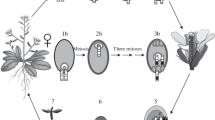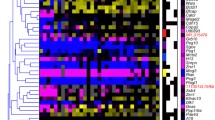Abstract
Genomic imprinting, representing parent-specific expression of alleles at a locus, is mainly evident in flowering plants and placental mammals. Most imprinted genes, including numerous non-coding RNAs, are located in clusters regulated by imprinting control regions (ICRs). The acquisition and evolution of genomic imprinting is among the most fundamental genetic questions. Discoveries about the transition of mammalian imprinted gene domains from their non-imprinted ancestors, especially recent studies undertaken on the most ancient mammalian clades — the marsupials and monotremes from which model species genomes have recently been sequenced, are of high value. By reviewing and analyzing these studies, a close connection between non-coding RNAs and the acquisition of genomic imprinting in mammals is demonstrated. The evidence comes from two observations accompanied with the acquisition of the imprinting: (i) many novel non-coding RNA genes emerged in imprinted regions; (ii) the expressions of some conserved non-coding RNAs have changed dramatically. Furthermore, a systematical analysis of imprinted snoRNA (small nucleolar RNA) genes from 15 vertebrates suggests that the origination of imprinted snoRNAs occurred after the divergence between eutherians and marsupials, followed by a rapid expansion leading to the fixation of major gene families in the eutherian ancestor prior to the radiation of modern placental mammals. Involved in the regulation of imprinted silencing and mediating the chromatins epigenetic modification may be the major roles that non-coding RNAs play during the acquisition of genomic imprinting in mammals.
Similar content being viewed by others
References
Zi X Y, Xiong J, Hu Y P. Genomic imprinted gene and its biological significance. Bull Nat Sci Found China, 2001(2): 68–72
Morison I M, Ramsay J P, Spencer H G. A census of mammalian imprinting. Trends Genet, 2005, 21(8): 457–465 15990197, 10.1016/j.tig.2005.06.008, 1:CAS:528:DC%2BD2MXmsVOht7k%3D
Field L M, Lyko F, Mandrioli M, et al. DNA methylation in insects. Insect Mol Biol, 2004, 13(2): 109–115 15056357, 10.1111/j.0962-1075.2004.00470.x, 1:CAS:528:DC%2BD2cXjs1GktL4%3D
McGrath J, Solter D. Completion of mouse embryogenesis requires both the maternal and paternal genomes. Cell, 1984, 37(1): 179–183 6722870, 10.1016/0092-8674(84)90313-1, 1:STN:280:DyaL2c3gsFKguw%3D%3D
Surani M A, Barton S C, Norris M L. Development of reconstituted mouse eggs suggests imprinting of the genome during gametogenesis. Nature, 1984, 308(5959): 548–550 6709062, 10.1038/308548a0, 1:STN:280:BiuC28fhs1A%3D
DeChiara T M, Robertson E J, Efstratiadis A. Parental imprinting of the mouse insulin-like growth factor II gene. Cell, 1991, 64(4): 849–859 1997210, 10.1016/0092-8674(91)90513-X, 1:CAS:528:DyaK3MXhtlOht7c%3D
Edwards C A, Ferguson-Smith A C. Mechanisms regulating imprinted genes in clusters. Curr Opin Cell Biol, 2007, 19(3): 281–289 17467259, 10.1016/j.ceb.2007.04.013, 1:CAS:528:DC%2BD2sXmsFKmsrc%3D
Royo H, Cavaille J. Non-coding RNAs in imprinted gene clusters. Biol Cell, 2008, 100(3): 149–166 18271756, 10.1042/BC20070126, 1:CAS:528:DC%2BD1cXitVKqtr4%3D
Yokomine T, Shirohzu H, Purbowasito W, et al. Structural and functional analysis of a 0.5-Mb chicken region orthologous to the imprinted mammalian Ascl2/Mash2-Igf2-H19 region. Genome Res, 2005, 15(1): 154–165 15590938, 10.1101/gr.2609605, 1:CAS:528:DC%2BD2MXlsVSruw%3D%3D
Smits G, Mungall A J, Griffiths-Jones S, et al. Conservation of the H19 noncoding RNA and H19-IGF2 imprinting mechanism in therians. Nat Genet, 2008, 40(8): 971–976 18587395, 10.1038/ng.168, 1:CAS:528:DC%2BD1cXptVKku7s%3D
Lin S P, Youngson N, Takada S, et al. Asymmetric regulation of imprinting on the maternal and paternal chromosomes at the Dlk1-Gtl2 imprinted cluster on mouse chromosome 12. Nat Genet, 2003, 35(1): 97–102 12937418, 10.1038/ng1233, 1:CAS:528:DC%2BD3sXmslelsr0%3D
Tierling S, Dalbert S, Schoppenhorst S, et al. High-resolution map and imprinting analysis of the Gtl2-Dnchc1 domain on mouse chromosome 12. Genomics, 2006, 87(2): 225–235 16309881, 10.1016/j.ygeno.2005.09.018, 1:CAS:528:DC%2BD28XnvVSruw%3D%3D
Edwards C A, Mungall A J, Matthews L, et al. The evolution of the DLK1-DIO3 imprinted domain in mammals. PLoS Biol, 2008, 6(6): e135 18532878, 10.1371/journal.pbio.0060135
Seitz H, Youngson N, Lin S P, et al. Imprinted microRNA genes transcribed antisense to a reciprocally imprinted retrotransposon-like gene. Nat Genet, 2003, 34(3): 261–262 12796779, 10.1038/ng1171, 1:CAS:528:DC%2BD3sXkvFSrsrs%3D
Davis E, Caiment F, Tordoir X, et al. RNAi-mediated allelic trans-interaction at the imprinted Rtl1/Peg11 locus. Curr Biol, 2005, 15(8): 743–749 15854907, 10.1016/j.cub.2005.02.060, 1:CAS:528:DC%2BD2MXjsFKiu7c%3D
Glazov E A, McWilliam S, Barris W C, et al. Origin, evolution, and biological role of miRNA cluster in DLK-DIO3 genomic region in placental mammals. Mol Biol Evol, 2008, 25(5): 939–948 18281269, 10.1093/molbev/msn045, 1:CAS:528:DC%2BD1cXlvVKhu78%3D
Sahoo T, del Gaudio D, German J R, et al. Prader-Willi phenotype caused by paternal deficiency for the HBII-85 C/D box small nucleolar RNA cluster. Nat Genet, 2008, 40(6): 719–721 18500341, 10.1038/ng.158, 1:CAS:528:DC%2BD1cXmsVejtr0%3D
Rapkins R W, Hore T, Smithwick M, et al. Recent assembly of an imprinted domain from non-imprinted components. PLoS Genet, 2006, 2(10): e182 17069464, 10.1371/journal.pgen.0020182
Cavaille J, Buiting K, Kiefmann M, et al. Identification of brain-specific and imprinted small nucleolar RNA genes exhibiting an unusual genomic organization. Proc Natl Acad Sci USA, 2000, 97(26): 14311–14316 11106375, 10.1073/pnas.250426397, 1:CAS:528:DC%2BD3MXitVCltg%3D%3D
Vitali P, Basyuk E, Le Meur E, et al. ADAR2-mediated editing of RNA substrates in the nucleolus is inhibited by C/D small nucleolar RNAs. J Cell Biol, 2005, 169(5): 745–753 15939761, 10.1083/jcb.200411129, 1:CAS:528:DC%2BD2MXltVanur8%3D
Kishore S, Stamm S. The snoRNA HBII-52 regulates alternative splicing of the serotonin receptor 2C. Science, 2006, 311(5758): 230–232 16357227, 10.1126/science.1118265, 1:CAS:528:DC%2BD28XkvVanuw%3D%3D
Peters J. Prader-Willi and snoRNAs. Nat Genet, 2008, 40(6): 688–689 18509309, 10.1038/ng0608-688, 1:CAS:528:DC%2BD1cXmsVejt74%3D
Richardson B J, Czuppon A B, Sharman G B. Inheritance of glucose-6-phosphate dehydrogenase variation in kangaroos. Nat New Biol, 1971, 230(13): 154–155 5279473, 1:CAS:528:DyaE3MXhtlOksb4%3D
Takagi N, Sasaki M. Preferential inactivation of the paternally derived X chromosome in the extraembryonic membranes of the mouse. Nature, 1975, 256(5519): 640–642 1152998, 10.1038/256640a0, 1:STN:280:CSqB3Mnlt1w%3D
West J D, Frels W I, Chapman V M, et al. Preferential expression of the maternally derived X chromosome in the mouse yolk sac. Cell, 1977, 12(4): 873–882 597862, 10.1016/0092-8674(77)90151-9, 1:CAS:528:DyaE1cXnt1WjsA%3D%3D
Xue F, Tian X C, Du F, et al. Aberrant patterns of X chromosome inactivation in bovine clones. Nat Genet, 2002, 31(2): 216–220 12032569, 10.1038/ng900, 1:CAS:528:DC%2BD38XktVKgt7w%3D
Heard E, Disteche C M. Dosage compensation in mammals: fine-tuning the expression of the X chromosome. Genes Dev, 2006, 20(14): 1848–1867 16847345, 10.1101/gad.1422906, 1:CAS:528:DC%2BD28XnsVyjtrk%3D
Brown C J, Lafreniere R G, Powers V E, et al. Localization of the X inactivation centre on the human X chromosome in Xq13. Nature, 1991, 349(6304): 82–84 1985270, 10.1038/349082a0, 1:CAS:528:DyaK3MXns1ansQ%3D%3D
Chureau C, Prissette M, Bourdet A, et al. Comparative sequence analysis of the X-inactivation center region in mouse, human, and bovine. Genome Res, 2002, 12(6): 894–908 12045143, 1:CAS:528:DC%2BD38Xks12hsrs%3D
Lee J T. Regulation of X-chromosome counting by Tsix and Xite sequences. Science, 2005, 309(5735): 768–771 16051795, 10.1126/science.1113673, 1:CAS:528:DC%2BD2MXmsFWmsL8%3D
Lee J T, Lu N. Targeted mutagenesis of Tsix leads to nonrandom X inactivation. Cell, 1999, 99(1): 47–57 10520993, 10.1016/S0092-8674(00)80061-6, 1:CAS:528:DyaK1MXmsleqs7g%3D
Ogawa Y, Lee J T. Xite, X-inactivation intergenic transcription elements that regulate the probability of choice. Mol Cell, 2003, 11(3): 731–743 12667455, 10.1016/S1097-2765(03)00063-7, 1:CAS:528:DC%2BD3sXjtVWkt7c%3D
Heard E, Rougeulle C, Arnaud D, et al. Methylation of histone H3 at Lys-9 is an early mark on the X chromosome during X inactivation. Cell, 2001, 107(6): 727–738 11747809, 10.1016/S0092-8674(01)00598-0, 1:CAS:528:DC%2BD38XhtFymtg%3D%3D
Hore T A, Koina E, Wakefield M J, et al. The region homologous to the X-chromosome inactivation centre has been disrupted in marsupial and monotreme mammals. Chromosome Res, 2007, 15(2): 147–161 17333539, 10.1007/s10577-007-1119-0, 1:CAS:528:DC%2BD2sXisVaqtLo%3D
Kay G F, Penny G D, Patel D, et al. Expression of Xist during mouse development suggests a role in the initiation of X chromosome inactivation. Cell, 1993, 72(2): 171–182 8425217, 10.1016/0092-8674(93)90658-D, 1:CAS:528:DyaK3sXhtFyis7c%3D
Dindot S V, Farin P W, Farin C E, et al. Epigenetic and genomic imprinting analysis in nuclear transfer derived Bos gaurus/Bos taurus hybrid fetuses. Biol Reprod, 2004, 71(2): 470–478 15044262, 10.1095/biolreprod.103.025775, 1:CAS:528:DC%2BD2cXmtFWgtb4%3D
Hore T A, Rapkins R W, Graves J A. Construction and evolution of imprinted loci in mammals. Trends Genet, 2007, 23(9): 440–448 17683825, 10.1016/j.tig.2007.07.003, 1:CAS:528:DC%2BD2sXpt1ags7w%3D
Weidman J R, Maloney K A, and Jirtle R L. Comparative phylogenetic analysis reveals multiple non-imprinted isoforms of opossum Dlk1. Mamm Genome, 2006, 17(2): 157–167 16465595, 10.1007/s00335-005-0116-x, 1:CAS:528:DC%2BD28Xht1Cms7s%3D
Paulsen M, Khare T, Burgard C, et al. Evolution of the Beckwith-Wiedemann syndrome region in vertebrates. Genome Res, 2005, 15(1): 146–153 15590939, 10.1101/gr.2689805, 1:CAS:528:DC%2BD2MXlsVSrug%3D%3D
Ager E I, Pask A J, Gehring H M, et al. Evolution of the CDKN1C-KCNQ1 imprinted domain. BMC Evol Biol, 2008, 8: 163 18510768, 10.1186/1471-2148-8-163
Kanduri C, Thakur N, Pandey R R. The length of the transcript encoded from the Kcnq1ot1 antisense promoter determines the degree of silencing. Embo J, 2006, 25(10): 2096–2106 16628224, 10.1038/sj.emboj.7601090, 1:CAS:528:DC%2BD28Xks1Wqurc%3D
Weidman J R, Dolinoy D C, Maloney K A, et al. Imprinting of opossum Igf2r in the absence of differential methylation and air. Epigenetics, 2006, 1(1): 49–54 17998818
O’sullivan F M, Murphy S K, Simel L R, et al. Imprinted expression of the canine IGF2R, in the absence of an anti-sense transcript or promoter methylation. Evol Dev, 2007, 9(6): 579–589 17976054, 1:CAS:528:DC%2BD2sXhsVGisbzP
Yang J H, Zhang X C, Huang Z P, et al. snoSeeker: an advanced computational package for screening of guide and orphan snoRNA genes in the human genome. Nucleic Acids Res, 2006, 34(18): 5112–5123 16990247, 10.1093/nar/gkl672, 1:CAS:528:DC%2BD28XhtFyqtrjE
Pauler F M, Koerner M V, Barlow D P. Silencing by imprinted noncoding RNAs: is transcription the answer? Trends Genet, 2007, 23(6): 284–292 17445943, 10.1016/j.tig.2007.03.018, 1:CAS:528:DC%2BD2sXlvVOnu7s%3D
Thorvaldsen J L, Bartolomei M S. SnapShot: imprinted gene clusters. Cell, 2007, 130(5): 958 17803916, 10.1016/j.cell.2007.08.033, 1:CAS:528:DC%2BD2sXhtV2ntLzE
Smilinich N J, Day C D, Fitzpatrick G V, et al. A maternally methylated CpG island in KvLQT1 is associated with an antisense paternal transcript and loss of imprinting in Beckwith-Wiedemann syndrome. Proc Natl Acad Sci USA, 1999, 96(14): 8064–8069 10393948, 10.1073/pnas.96.14.8064, 1:CAS:528:DyaK1MXltVOrsrs%3D
Mancini-DiNardo D, Steele S J, Ingram R S, et al. A differentially methylated region within the gene Kcnq1 functions as an imprinted promoter and silencer. Hum Mol Genet, 2003, 12(3): 283–294 12554682, 10.1093/hmg/ddg024, 1:CAS:528:DC%2BD3sXitVWqtrY%3D
Fitzpatrick G V, Soloway P D, Higgins M J. Regional loss of imprinting and growth deficiency in mice with a targeted deletion of KvDMR1. Nat Genet, 2002, 32(3): 426–431 12410230, 10.1038/ng988, 1:CAS:528:DC%2BD38Xot1Klsbw%3D
Mancini-Dinardo D, Steele S J, Levorse J M, et al. Elongation of the Kcnq1ot1 transcript is required for genomic imprinting of neighboring genes. Genes Dev, 2006, 20(10): 1268–1282 16702402, 10.1101/gad.1416906, 1:CAS:528:DC%2BD28XltVyrtbo%3D
Wilkins J F. Genomic imprinting and methylation: epigenetic canalization and conflict. Trends Genet, 2005, 21(6): 356–365 15922835, 10.1016/j.tig.2005.04.005, 1:CAS:528:DC%2BD2MXks1Cmtrs%3D
Bender J. DNA methylation and epigenetics. Annu Rev Plant Biol, 2004, 55: 41–68 15725056, 10.1146/annurev.arplant.55.031903.141641, 1:CAS:528:DC%2BD2cXlvFeis78%3D
Royo H, Bortolin M L, Seitz H, et al. Small non-coding RNAs and genomic imprinting. Cytogenet Genome Res, 2006, 113(1–4): 99–108 16575168, 10.1159/000090820, 1:CAS:528:DC%2BD28XjtVSqtL0%3D
Walter J, Hutter B, Khare T, et al. Repetitive elements in imprinted genes. Cytogenet Genome Res, 2006, 113(1–4): 109–115 16575169, 10.1159/000090821, 1:CAS:528:DC%2BD28XjtVSqtLo%3D
Cavaille J, Seitz H, Paulsen M, et al. Identification of tandemly-repeated C/D snoRNA genes at the imprinted human 14q32 domain reminiscent of those at the Prader-Willi/Angelman syndrome region. Hum Mol Genet, 2002, 11(13): 1527–1538 12045206, 10.1093/hmg/11.13.1527, 1:CAS:528:DC%2BD38XltVyrsL8%3D
Mette M F, Aufsatz W, van der Winden J, et al. Transcriptional silencing and promoter methylation triggered by double-stranded RNA. Embo J, 2000, 19(19): 5194–5201 11013221, 10.1093/emboj/19.19.5194, 1:CAS:528:DC%2BD3cXnvF2qtLk%3D
Jones L, Ratcliff F, Baulcombe D C. RNA-directed transcriptional gene silencing in plants can be inherited independently of the RNA trigger and requires Met1 for maintenance. Curr Biol, 2001, 11(10): 747–757 11378384, 10.1016/S0960-9822(01)00226-3, 1:CAS:528:DC%2BD3MXjvFSiuro%3D
Sijen T, Vijn I, Rebocho A, et al. Transcriptional and posttranscriptional gene silencing are mechanistically related. Curr Biol, 2001, 11(6): 436–440 11301254, 10.1016/S0960-9822(01)00116-6, 1:CAS:528:DC%2BD3MXis1SjtrY%3D
Matzke M A, Birchler J A. RNAi-mediated pathways in the nucleus. Nat Rev Genet, 2005, 6(1): 24–35 15630419, 10.1038/nrg1500, 1:CAS:528:DC%2BD2MXlvVGh
Kawasaki H, Taira K. Induction of DNA methylation and gene silencing by short interfering RNAs in human cells. Nature, 2004, 431(7005): 211–217 15311210, 10.1038/nature02889, 1:CAS:528:DC%2BD2cXntlGks7Y%3D
Morris K V, Chan S W, Jacobsen S E, et al. Small interfering RNA-induced transcriptional gene silencing in human cells. Science, 2004, 305(5688): 1289–1292 15297624, 10.1126/science.1101372, 1:CAS:528:DC%2BD2cXmvFCit78%3D
Author information
Authors and Affiliations
Corresponding author
Additional information
Supported by National Natural Science Foundation of China (Grant No. 30830066), the Ministry of Education of China and Natural Science Foundation of Guangdong Province (Grant No. IRT0447, NSF-05200303) and National Key Basic Research and Development Program of China (Grant No. 2005CB724600)
Rights and permissions
About this article
Cite this article
Zhang, Y., Qu, L. Non-coding RNAs and the acquisition of genomic imprinting in mammals. SCI CHINA SER C 52, 195–204 (2009). https://doi.org/10.1007/s11427-009-0035-2
Received:
Accepted:
Published:
Issue Date:
DOI: https://doi.org/10.1007/s11427-009-0035-2




